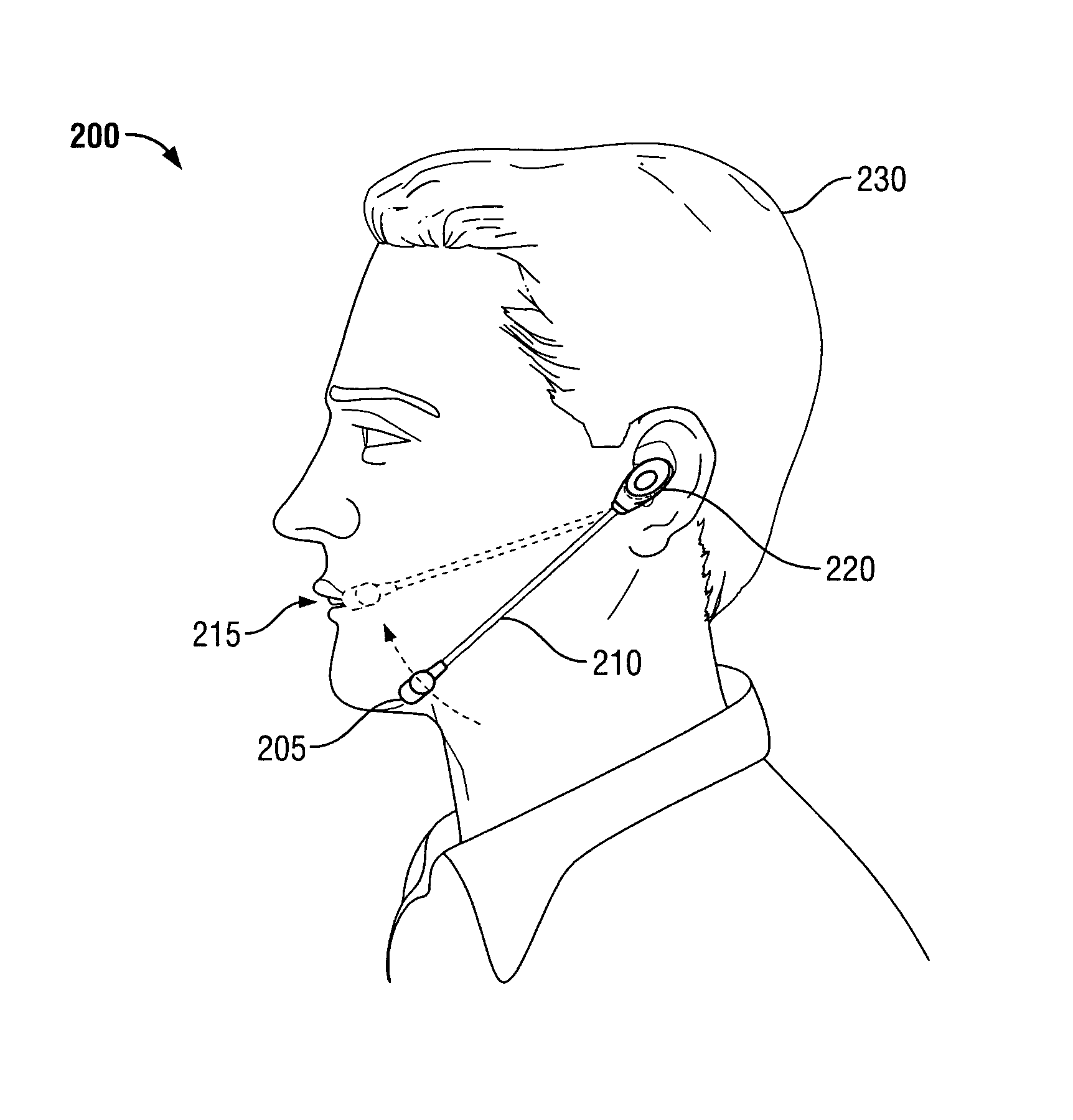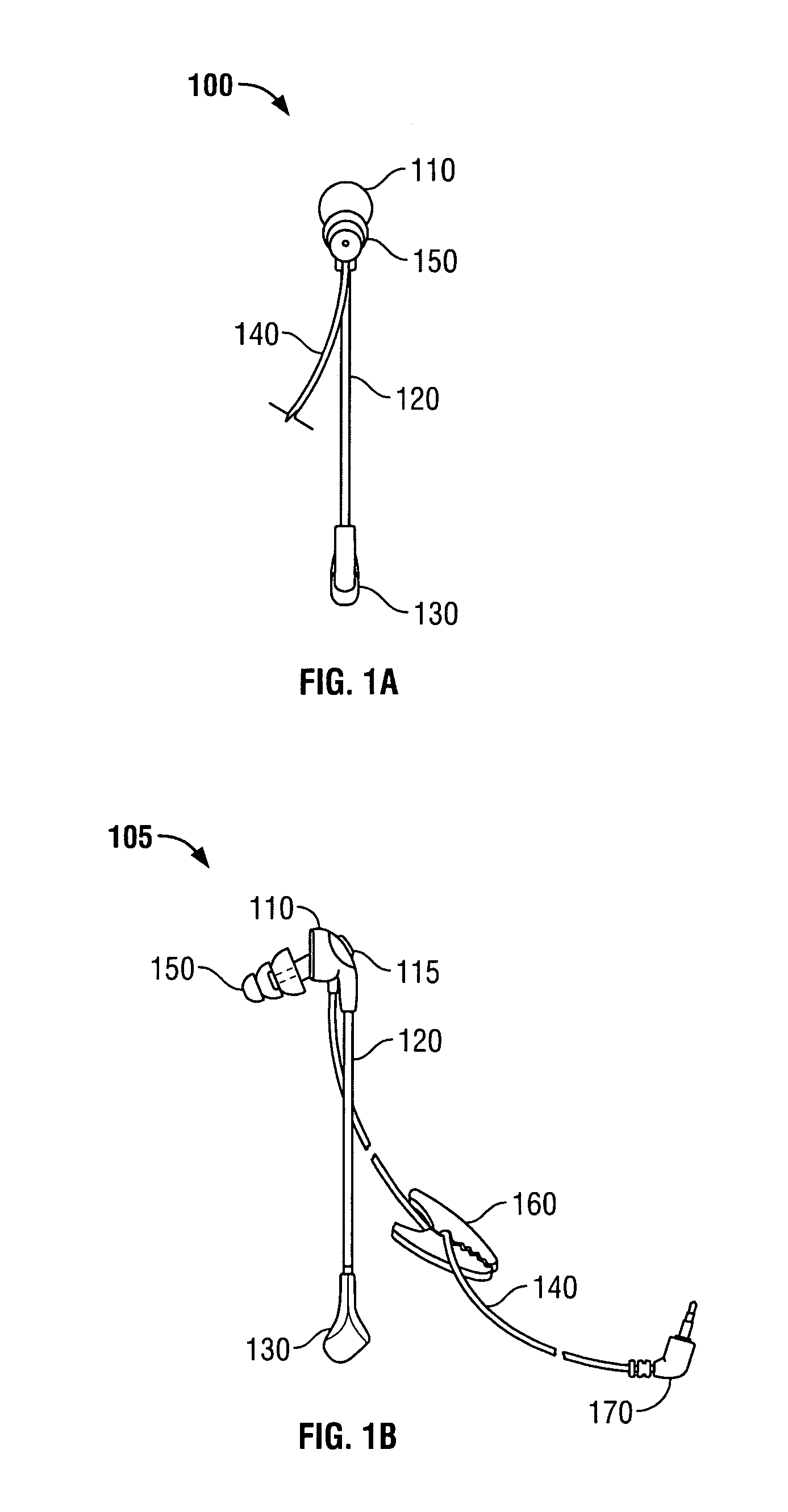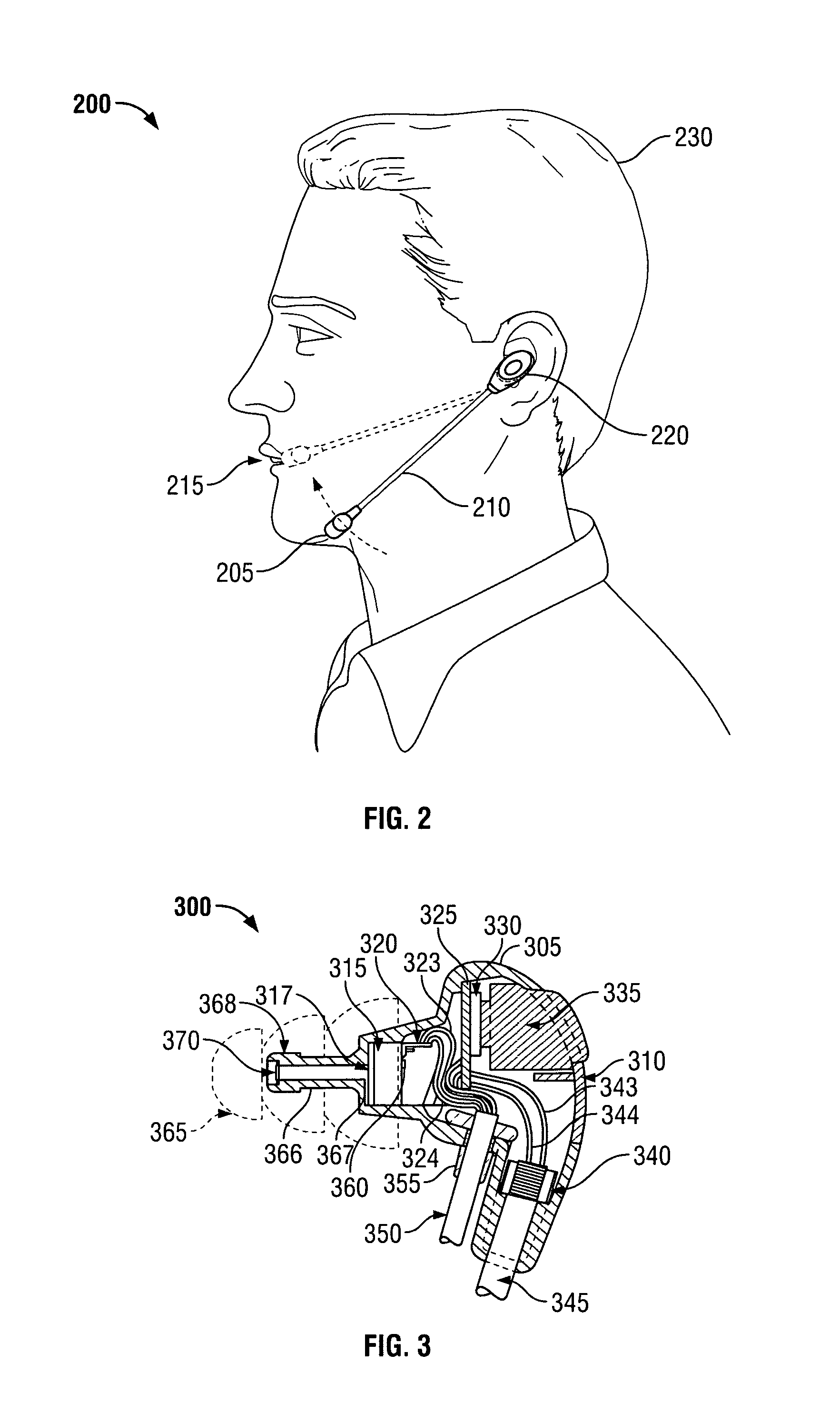Two-way voice communication device having external acoustic noise reduction
a communication device and external technology, applied in the direction of earpiece/earphone cable, loudspeaker, earpiece/microphone attachment, etc., can solve the problems of poor isolation from external audible noise, bulky and unattractive, and is not suitable for use in many situations where portable voice communication devices are used. to achieve the effect of reducing external acoustic nois
- Summary
- Abstract
- Description
- Claims
- Application Information
AI Technical Summary
Benefits of technology
Problems solved by technology
Method used
Image
Examples
Embodiment Construction
[0033]Aspects of the present invention relate to an earphone for use with voice communication equipment such as cellular telephones. In particular, certain embodiments relate to earphones that provide both a high level of external acoustic noise exclusion and improved support for the earphone and an integral microphone.
[0034]FIGS. 1A and 1B illustrate two views of an exemplary embodiment of a two-way voice communication device having a external acoustic noise reducing insert earphone assembly in accordance with the present invention. In the illustrated embodiment, earphone assembly 105 includes housing 110 with attached ear tip 150 for insertion within the ear canal of the user. Microphone 130 is located at one end of boom 120, the other end of which is attached to housing 110. Multi-conductor cable 140 connects earphone assembly 105 to an external electrical audio device through connector 170. Button 115 may be used to mute the audio signal from microphone 130. Clip 160 may be incl...
PUM
 Login to View More
Login to View More Abstract
Description
Claims
Application Information
 Login to View More
Login to View More - R&D
- Intellectual Property
- Life Sciences
- Materials
- Tech Scout
- Unparalleled Data Quality
- Higher Quality Content
- 60% Fewer Hallucinations
Browse by: Latest US Patents, China's latest patents, Technical Efficacy Thesaurus, Application Domain, Technology Topic, Popular Technical Reports.
© 2025 PatSnap. All rights reserved.Legal|Privacy policy|Modern Slavery Act Transparency Statement|Sitemap|About US| Contact US: help@patsnap.com



